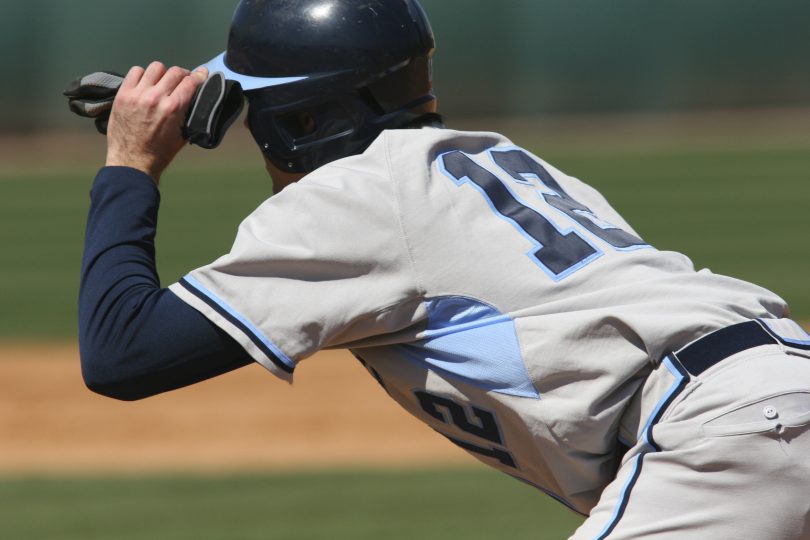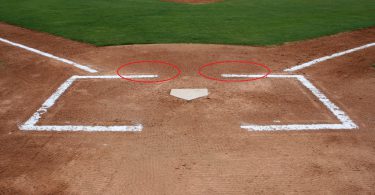The Situation:
The bases are loaded with 1 out in the top of the 4th inning in a playoff game. It’s a hot, dry day and the pitcher has already given up 2 runs in the inning. With the score 6-2, this is an opportunity for the offense to get back into the game. The batter has a 2-1 count as the pitcher comes set.
The Play:
The hitter gets his fastball but just misses it, skying a popup behind second base. The base runners initially react back towards the bases and the runner at 3rd goes all the way back to the bag to tag up. The right fielder comes charging in and the second baseman moves back about five steps into the outfield grass. The second baseman calls for the ball. Meanwhile the runner at third, seeing the second baseman under the pop-up, decides to extend a few steps off of the base at the last second, in case the ball is dropped. He shuffles off 8-10 feet.
The Outcome:
The ball comes down and the second baseman reaches up overhead and catches the ball. The momentum of the catch carries him back a step. His legs get tangled with the right fielder’s legs and the second baseman ends up falling down. The play creates some confusion as to whether he holds onto the ball. He does and is down for a quick second before getting back to his feet and getting the ball into the catcher.
The runner at third, having extended off the bag, scrambles back to tag up after realizing the catch and collision. He takes a few steps towards home but shuts it down after deciding he’s too late. His read and attempt to get back to the base to tag up took too long.
What Went Wrong:
We’ve talked a lot about the importance of having a base running system or process to help guide decision-making on the bases. You should be well-versed in the system your team uses and it’s highly likely your team’s system would agree with the initial response of the runner to head back to the base and tag at 3rd. When the ball is hit in the air, base runners at 3rd with less than 2 outs should always react back to the base as they read the play. At that point, the runner is faced with two options—tag up or extend as far as possible and necessary to score on a drop, should you feel under no circumstances could you score by tagging. With the second baseman under the ball the best option for the base runner at third is to tag up and here’s why:
1) Tagging up simplifies everything. His only read is judging when the fielder makes contact with the ball. That’s an easy read and will allow him to extend home safely and aggressively. He can take several hard steps towards home while reading the play and make a more educated decision on whether to continue or return to third base. Of course once he knows that the ball will not be caught, you should run home without delay.
2) On a ball too close to have a legitimate chance to tag on a clean catch, it’s unlikely he will be able to extend any distance that will give him an advantage scoring should the ball be dropped. Extending often doesn’t give base runners the advantage one would expect because they must read the play until the outcome (catch or no catch) is determined and are likely hopping back-and-forth like a squirrel or standing with little momentum.
Think about it like this, in the time it takes the runner to read catch or no catch and notice the fielder falling over, he is still 75-80 feet from home with little or no momentum and still has to go back to tag up on a catch. A tagging runner would be about 80 feet from home with three steps of momentum in the right direction as the second baseman’s backside is hitting the ground. He doesn’t have to worry about whether he catches the ball or not, just whether the second baseman will be able to throw him out.
As this situation shows, the advantages of tagging are numerous. You get to leave at full speed immediately when the fielder initially makes contact with the ball (no need to wait to see if he catches, bobbles, or drops the ball—your only read is whether he can throw you out at home), you have several steps to continue reading the play as it develops and make your decision, and you can score on a catch or a drop. Momentum, decision-making time, simplification of the read, and the ability to continue reading the play are all critical to the decision to tag here. We’ve seen variations of the tag or extend at 3rd on a shallow fly ball play out often and in real-time decision-making, the runner who extends rarely has an advantage over the runner who tags.







